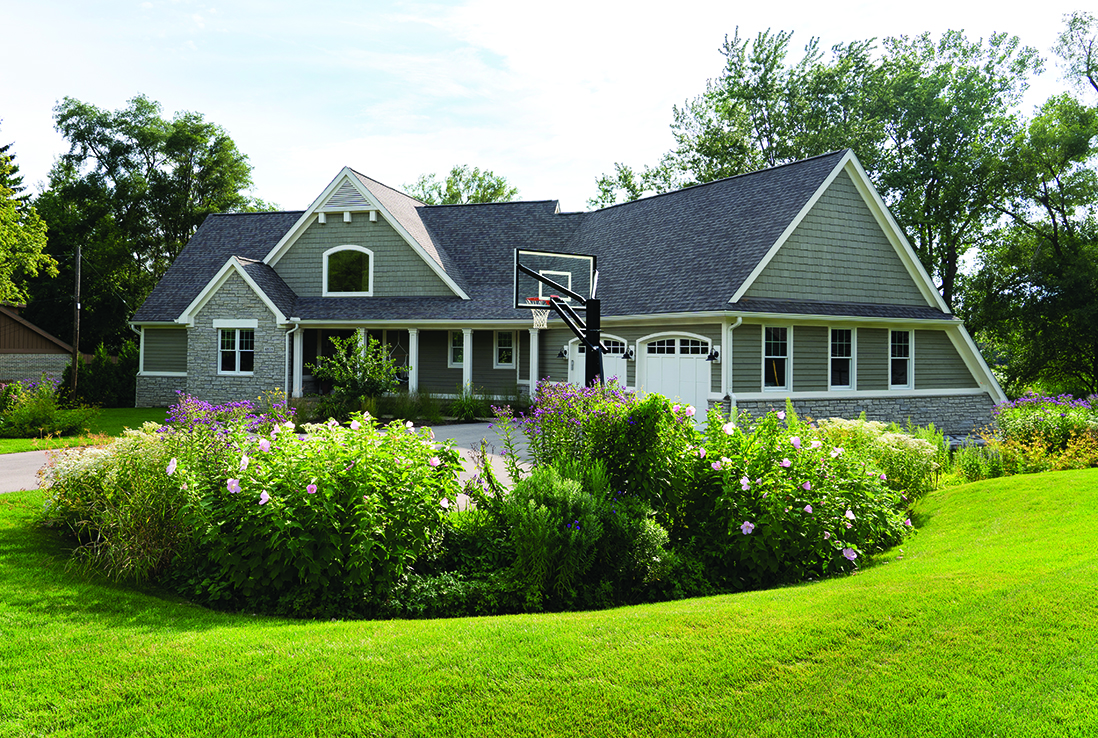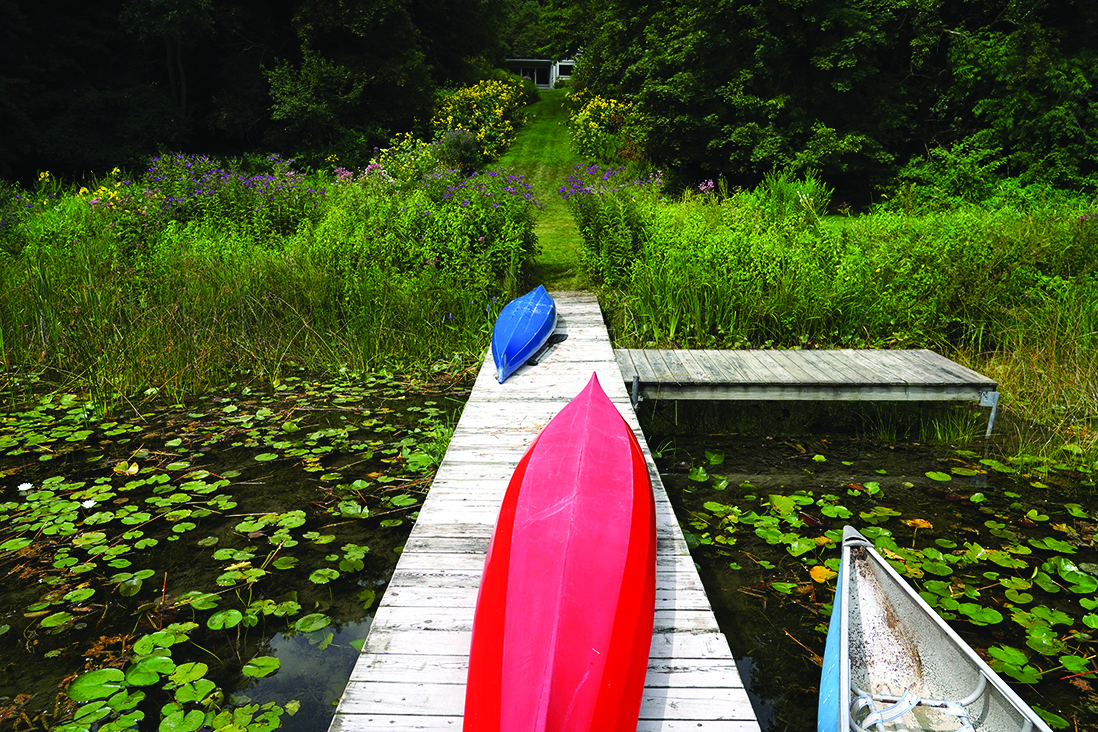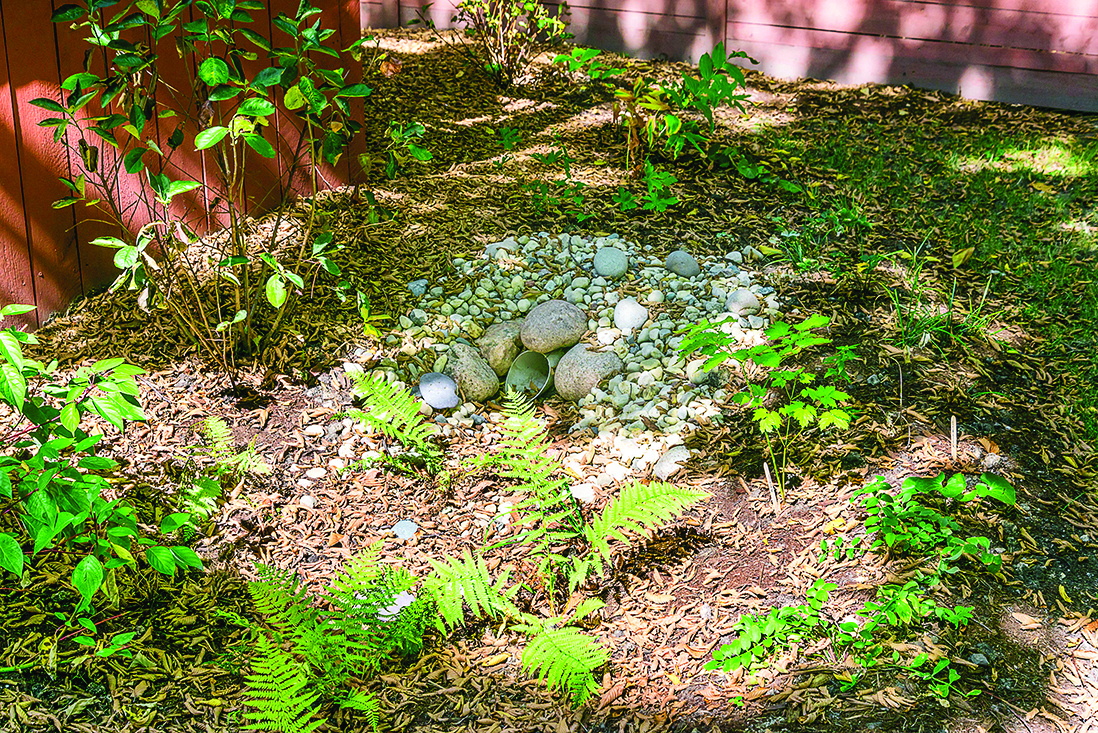Soak up the rain with a rain garden
Beautify your yard and neighborhood while helping the environment with a rain garden.

Beautify your yard and neighborhood while helping the environment with a rain garden. Rain gardens are a unique landscaping practice used to filter and absorb rainwater that runs off roofs and driveways, allowing it to be slowly reintroduced into our water system. They help the environment by keeping pollution out of storm drains and instead filter it naturally through the soil. Often planted with deep rooted and lush native plants, rain gardens are also an excellent way to attract birds and butterflies to your yard.
Rain gardens capture and absorb water within a day or two of a rain event and are dry most of the year. They are designed to direct water from gutters or high parts of your yard into shallow depressed garden areas planted with native species. Rain gardens can be a very affordable and attractive option for those interested in protecting water and enhancing their landscape. When considering a rain garden, there are a few factors to keep in mind.
Place it where the water flows
A rain garden should be installed where it can collect the most rainwater runoff as possible, likely near driveways and downspouts. Capturing rainwater from rooftops is simple if your house has gutters. Depending on the shape of your yard, you can build a stone channel from a downspout or bury a 4-inch plastic downspout extender into the garden bed. The shape and depth of a rain garden can be a natural depression in your landscape or one you create.
While it may be tempting to locate a rain garden in a low, wet spot in your yard, do not place it where water is currently ponding. Standing water indicates soil that is slow to absorb water and the function of a rain garden is to assist with water infiltration. Place rain gardens at least 10 feet away from buildings to prevent water seeping into the building. Do not place a rain garden over a septic tank, leach field or drinking water well.
Rain gardens should be as level as possible. Water should not pool at one end or spill over an edge before it has a chance to soak in. Constructing a rain garden on level ground will also make it easier to install since you won’t need to remove as much soil.
Big or small, every little bit helps
Rain gardens are usually a few inches deep (4-8 inches) and can be designed in any shape or size. Generally crescent, kidney and teardrop shapes work well. Typical rain gardens are 100 to 300 square feet. The size and depth depend on soil type. Gardens placed in sandy, well-draining soil can be much deeper than rain gardens in less permeable clay soil. Depending on the soil type, it may be necessary to replace some soil with an absorbent soil mix to help with water infiltration.
Generally, rain gardens should be about twice as long as they are wide, and the length of the garden perpendicular to where water is entering. During an average rainfall, most of the garden should fill with water and infiltrate within a day.

Some common native flowers and shrubs found in rain gardens

Fill it with thirsty plants for the biggest impact
Native plants are an easy option for rain gardens because they tolerate short periods of standing water and can deal with drought conditions during hot summer months. Their deep root system also aids in water infiltration. It is best to purchase established plants since seeds can easily be washed away.
Rain gardens are designed to drain within 24 to 48 hours, therefore moisture-loving native plants may not be ideal for all rain gardens. In the deepest part of your rain garden, choose plants that have average to moist water requirements. The outside and edges should be planted with species that thrive in average or even dry conditions. If there are native plants already in your yard that are adapted to both wet and dry conditions, save money and transplant them.

A little maintenance goes a long way
Similar to other landscaping features, some maintenance is necessary for rain gardens including mulching, weeding and watering in the first year. Once established, the plants should outcompete most weeds. It may also be necessary to periodically re-mulch and clear dead vegetation and other debris such as sediment and sand. Rain gardens can potentially attract unwanted insects and wildlife. However, they are not a source of mosquitoes, which require a week of standing water to breed.

Resources
- Michigan native plant information
- Rain Gardens: A Guide for Homeowners and Landscapers, Wisconsin Department of Natural Resources
- MSU Extension lawn and garden soil test kits
- More Smart Gardening for Shoreland tip sheets
For more information on a wide variety of Smart Gardening topics, visit www.migarden.msu.edu or call MSU’s Lawn and Garden hotline at 1-888-678-3464.
This publication is supported in part by the Crop Protection and Pest Management Program 2017-70006-27175 from the USDA National Institute of Food and Agriculture. Any opinions, findings, conclusions, or recommendations expressed are those of the author(s) and do not necessarily reflect the view of the U.S. Department of Agriculture.



 Print
Print Email
Email


